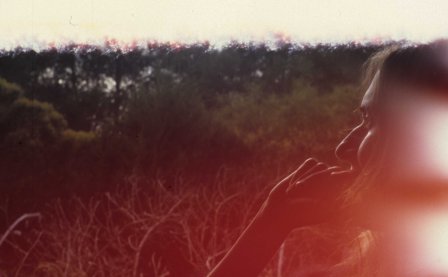Although Emily Dickinson is one of the most well-known American poets by name — we all have to read her in high school — she doesn’t exactly have a lot of greatest hits. If asked to name one of her poems (tricky, since none of them have titles), most of us would probably come up with “Because I could not stop for death,” “Wild Nights — Wild Nights!”, or, maybe, due to the proto-surreal quality of the opening line, “Hope is the thing with feathers.” What you might not remember, though, is that her poetry isn’t the easiest read. While she uses fairly simple language, straightforward rhymes, and themes that don’t come off as particularly hard to grasp, her unique compositional structure and use of punctuation (all those — dashes!) lends each poem a different reading by whomever approaches it; plus, it just looks weird on the page.
This sort of composition also lends itself to open-ended musical interpretation, and Dickinson’s poetry has been set to music several times, most famously by Aaron Copland. We’re fortunate that someone as talented, intelligent, and possessing of such a marvelous voice as Josephine Foster has done this in our own time. On her new album, Graphic as a Star, Foster has carefully (or perhaps intuitively — it would be interesting to hear outtakes or aborted attempts) selected 26 of Dickinson’s approximately 1,800 poems, choosing ones that seem to fit within her own natural phrasing. The songs here don’t sound terribly different from those on her folkier releases, and Graphic could be considered a companion piece to Wolf in Sheep’s Clothing, Foster’s 2005 interpretation of 19th-century German Lieder written by the likes of Brahms, Schubert, and Goethe. In fact, if you didn’t know these were 150-year-old poems, I’m guessing most non-American Lit grad students wouldn’t pick up on the songs’ sources. In many ways, it’s her most straightforward, American folk-sounding record yet: the gentle acoustic guitar strums and light picking provide a simple backdrop to the lyrical delivery (as expected of folk music at its most basic function), and the few harmonica flourishes sound remarkably similar to runs on Dylan’s earliest records.
Dickinson’s poems are famously short, and a few of these tracks clock in at just over 30 seconds, usually in an a cappella delivery and from poems comprising fewer than 10 lines. The longest song, “My Life had stood a Loaded Gun,” reaches nearly five minutes, an epic for this album. Foster’s voice stretches 24 lines into a pastoral lament via a mildly melancholic, hummable tune. It’s positioned in the middle of the album, allowing the conceptual nature and short duration of the project to fall away for a moment. “Tell as a Marksman,” one of the final tracks, serves a similar function, swinging a bit with harmonica accompaniment and serving up something akin to a pop song.
Grounding all of this is Foster’s voice, a lilting, robust instrument that has few peers in the contemporary folk scene, freak or mersh. As a teenager, she trained to be an opera singer and was herself a singing teacher for a while; the application of that training to this type of music (art folk? avant folk?) is the primary component that makes all of her records immediately arresting. Whether solo or with a psych-rock band, performing children’s songs or interpreting poetry, playing harp or ukulele, acoustic or electric guitar, she always sounds uniquely herself, while bringing something different to each album. Foster is one of those artists you can’t help but admire, even if you don’t always like the results of the varying paths she explores. With Graphic As A Star, she’s delivered an intimate reading of a revered American poet and made it entirely her own, creating her most beguiling work yet in the process.
More about: Josephine Foster




